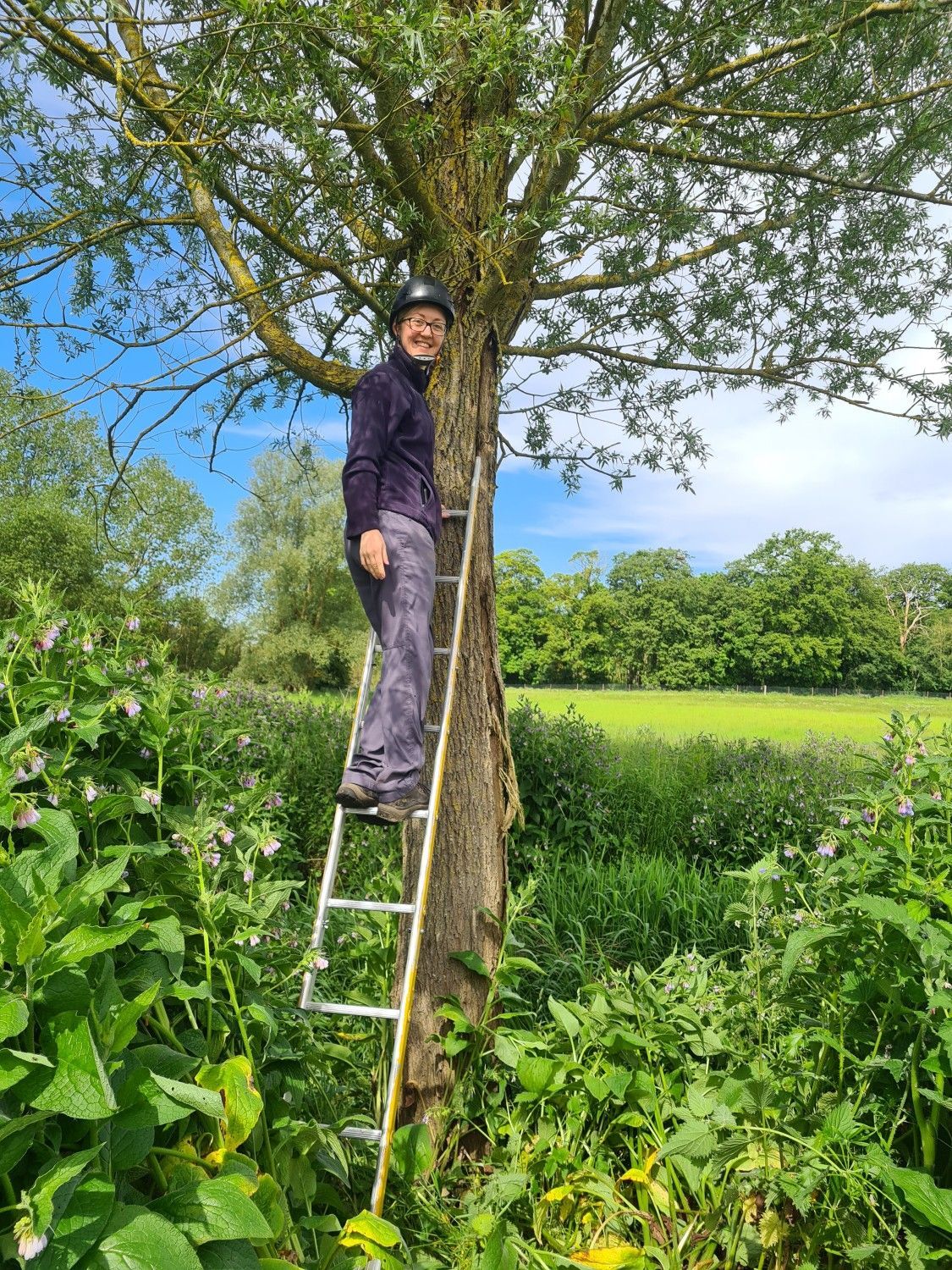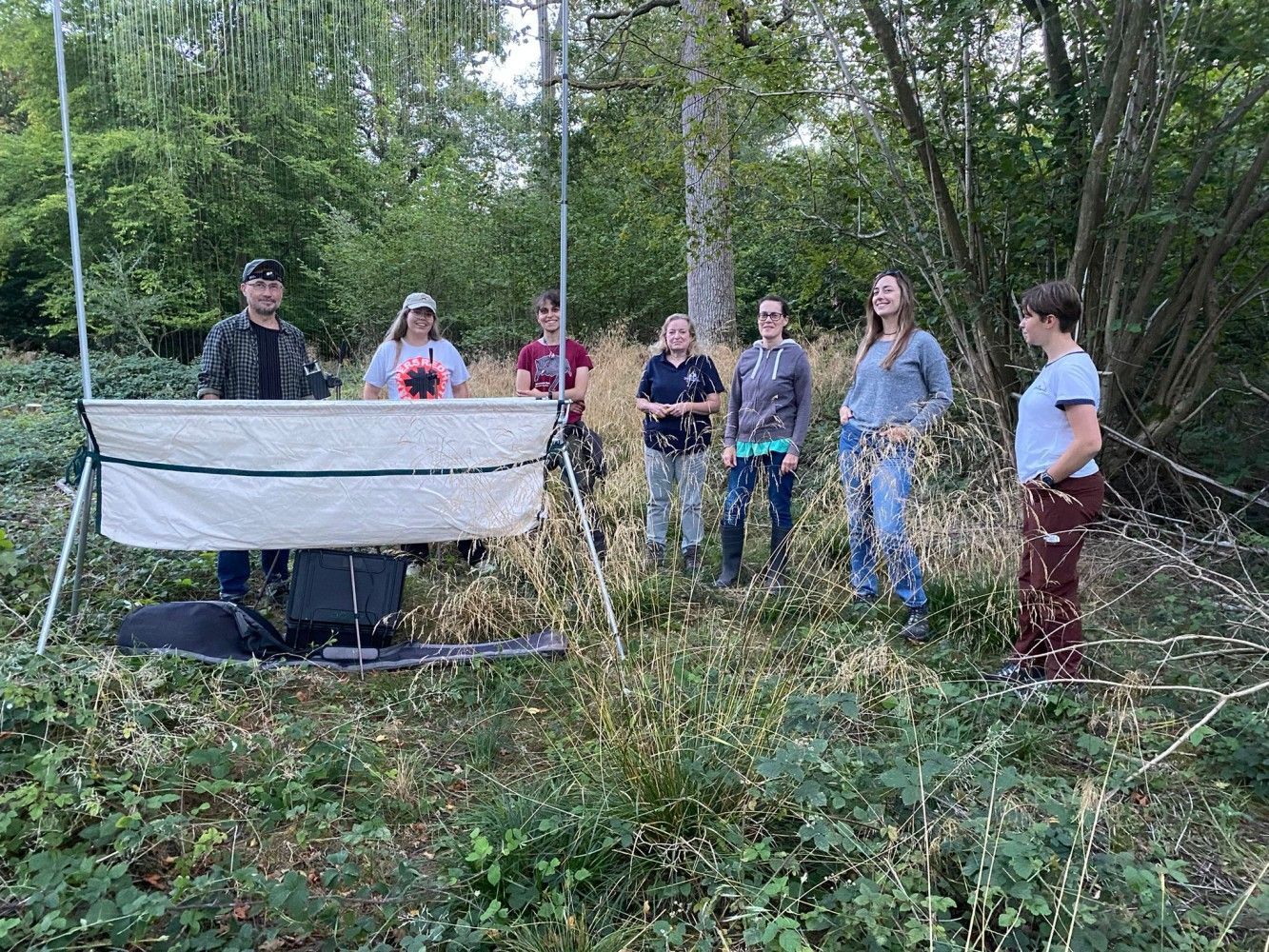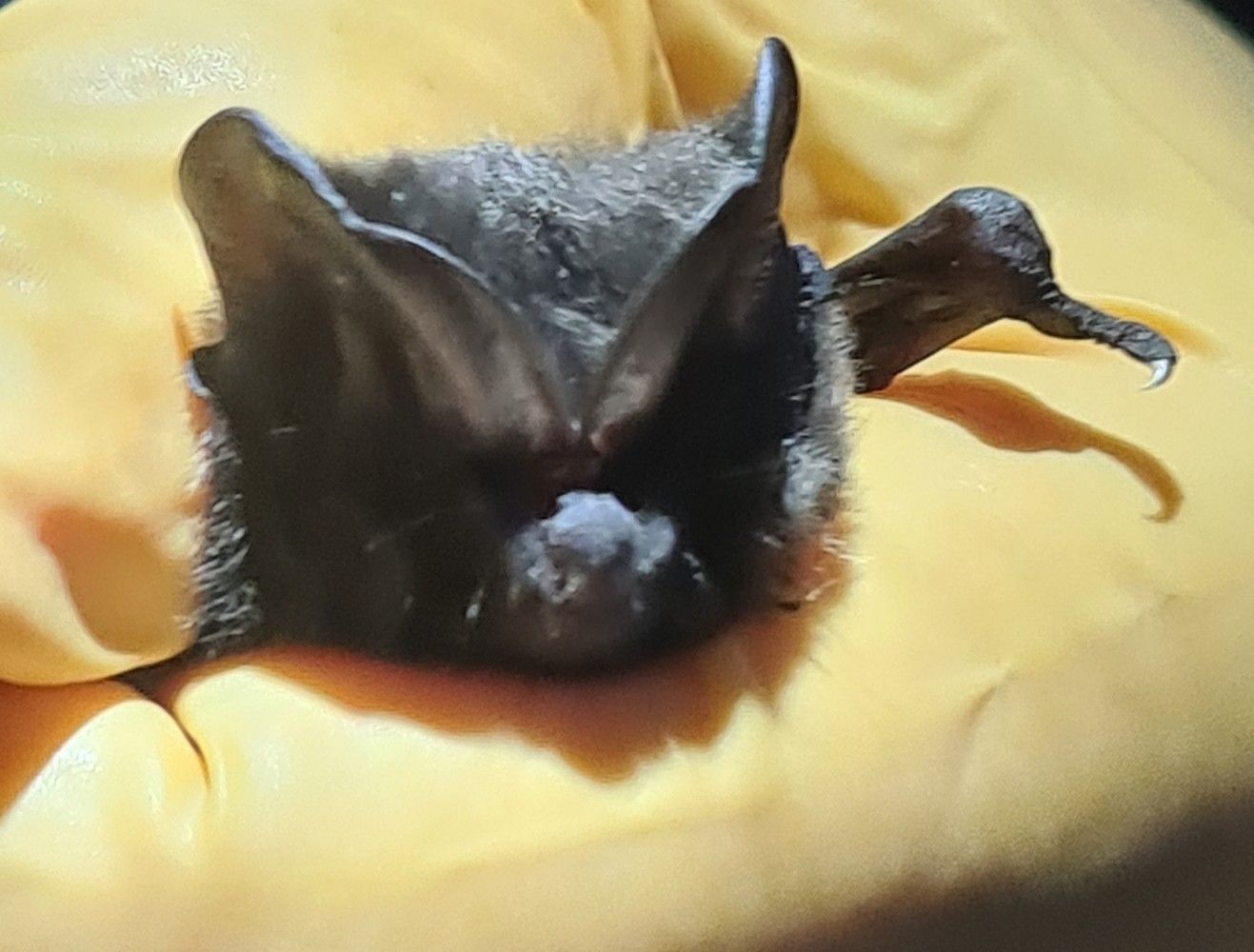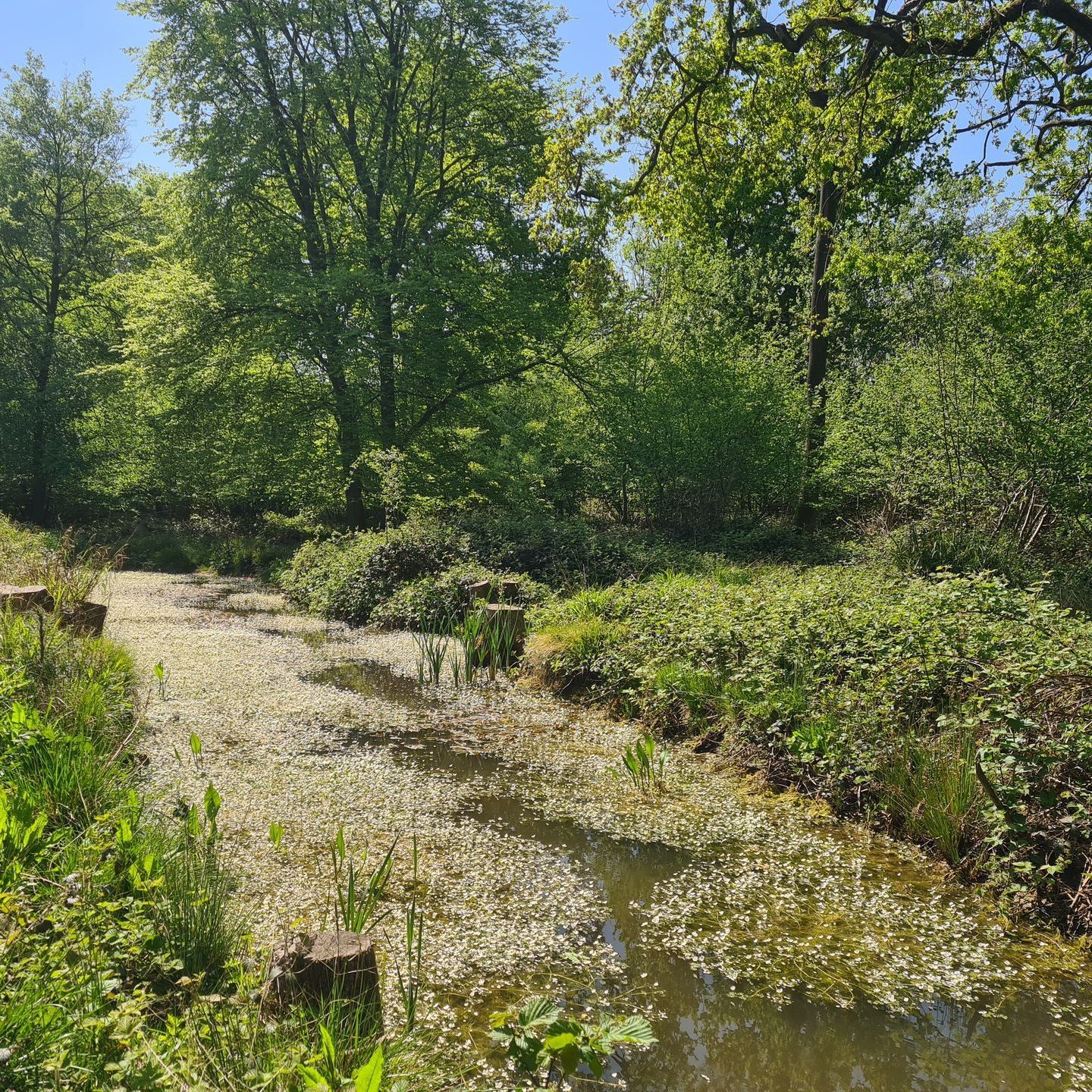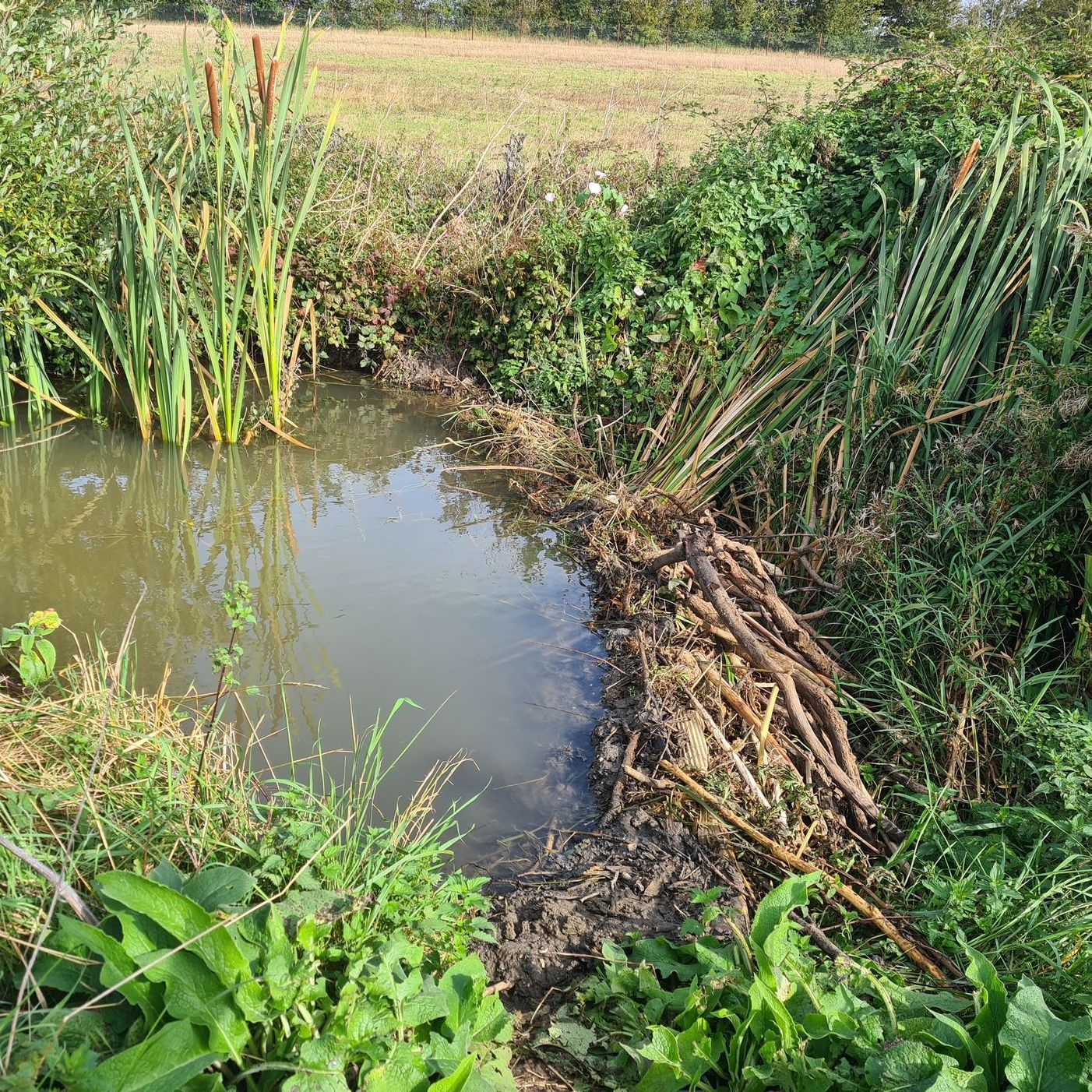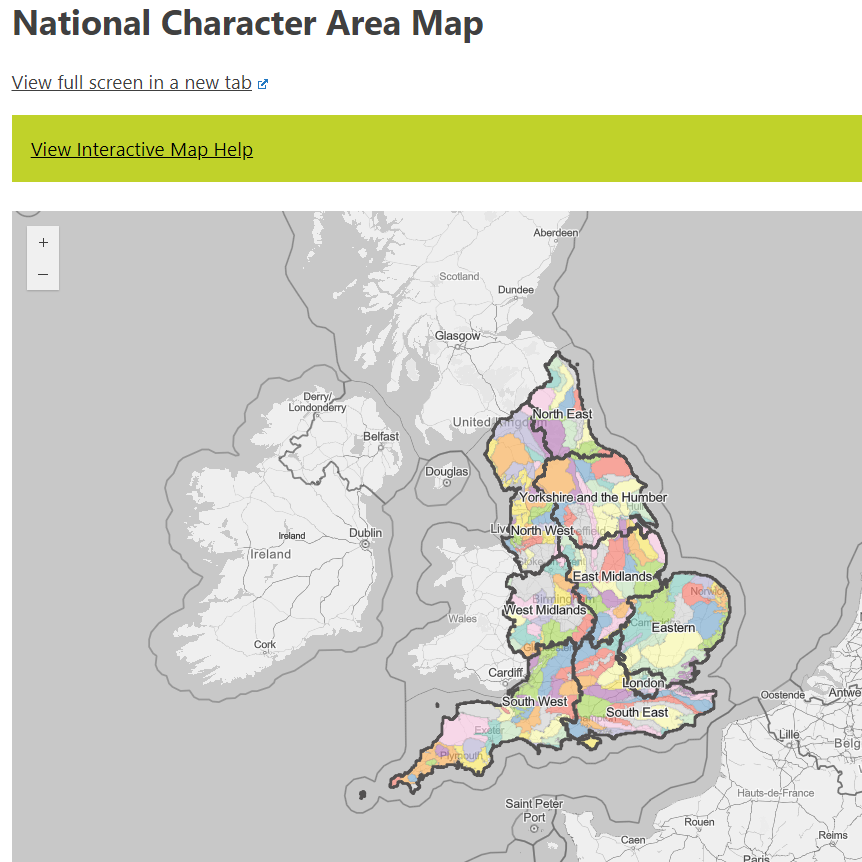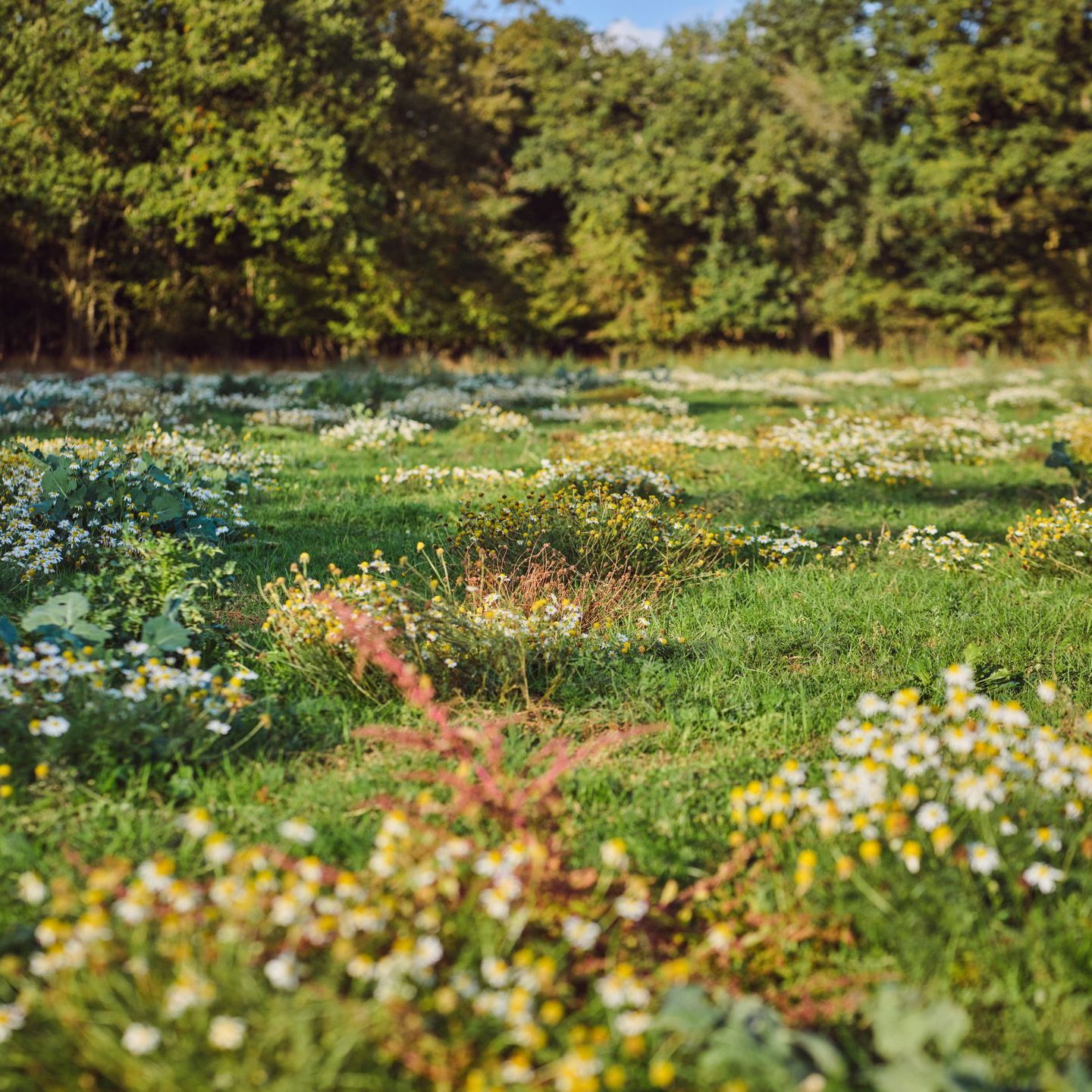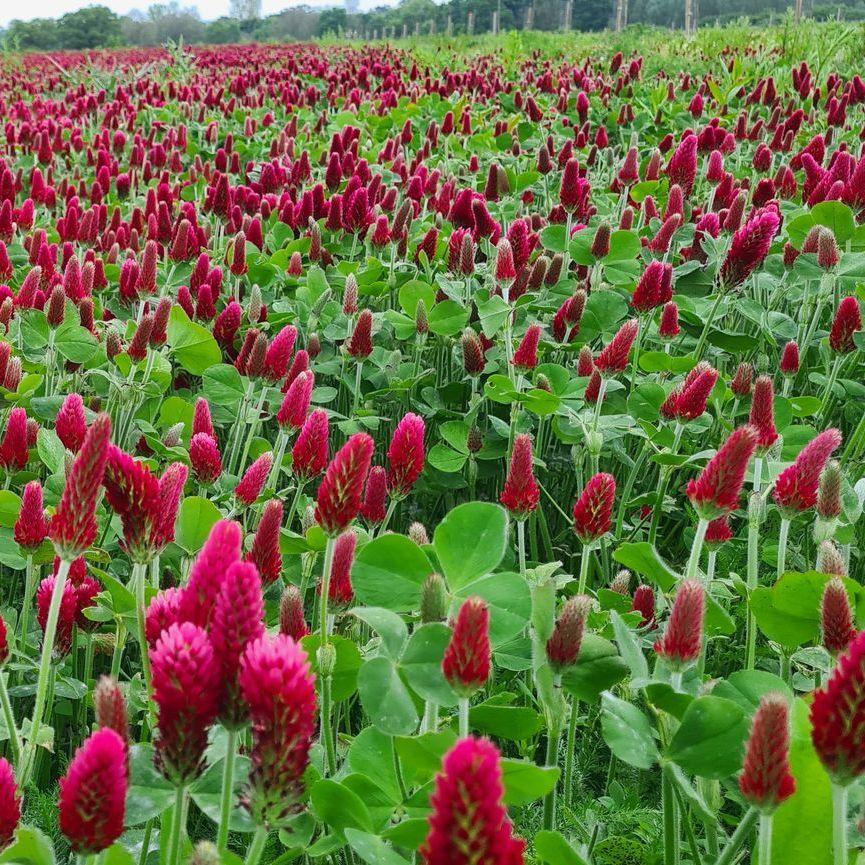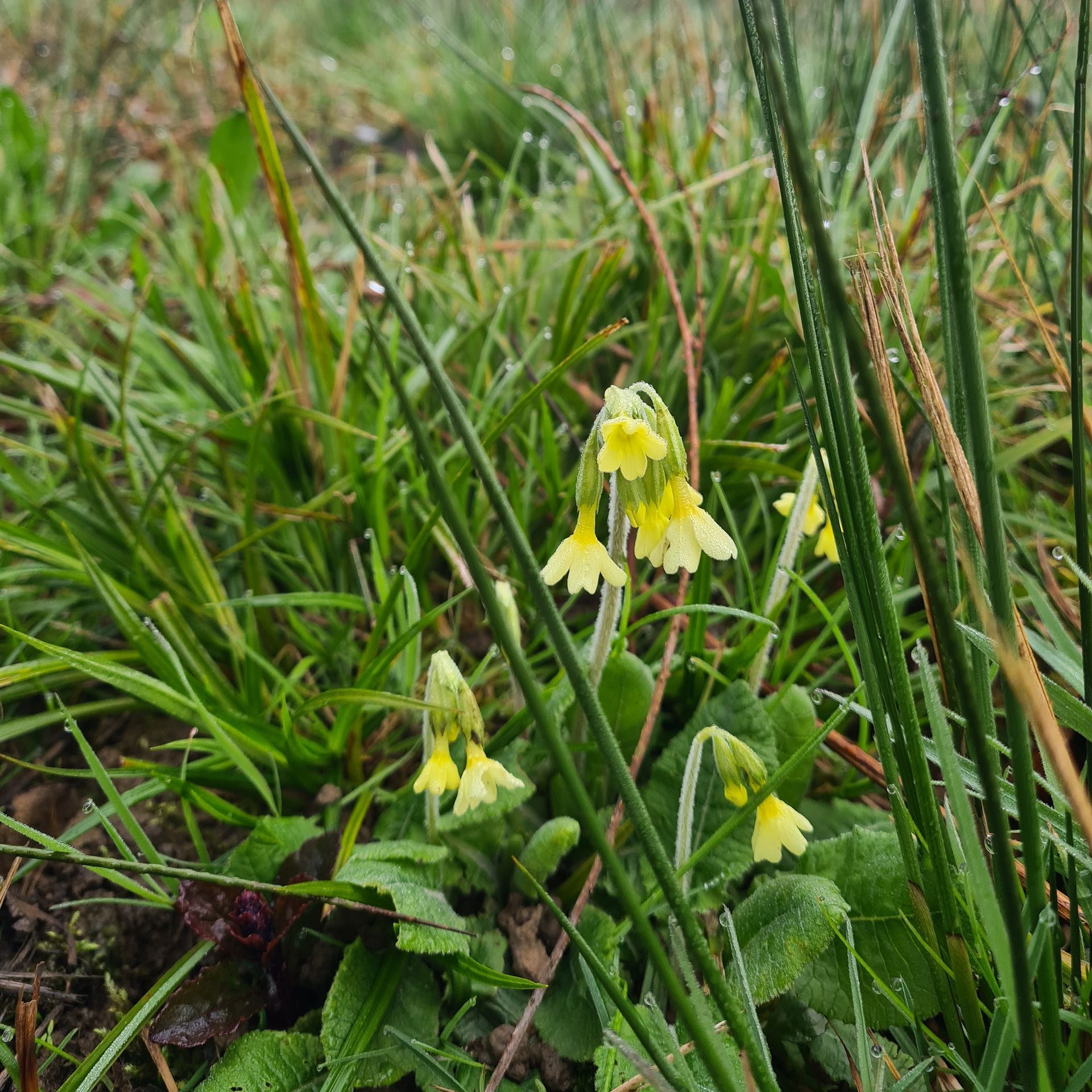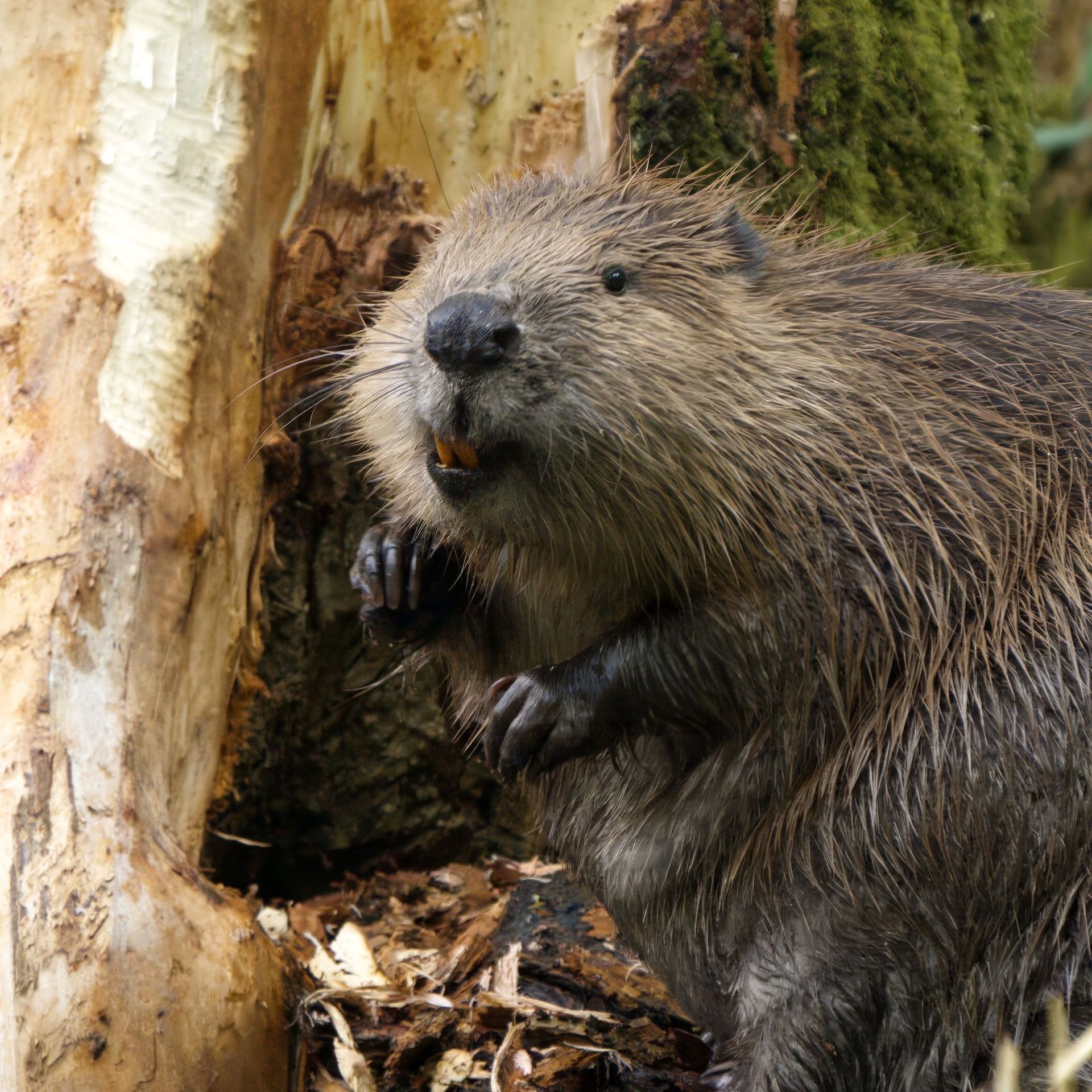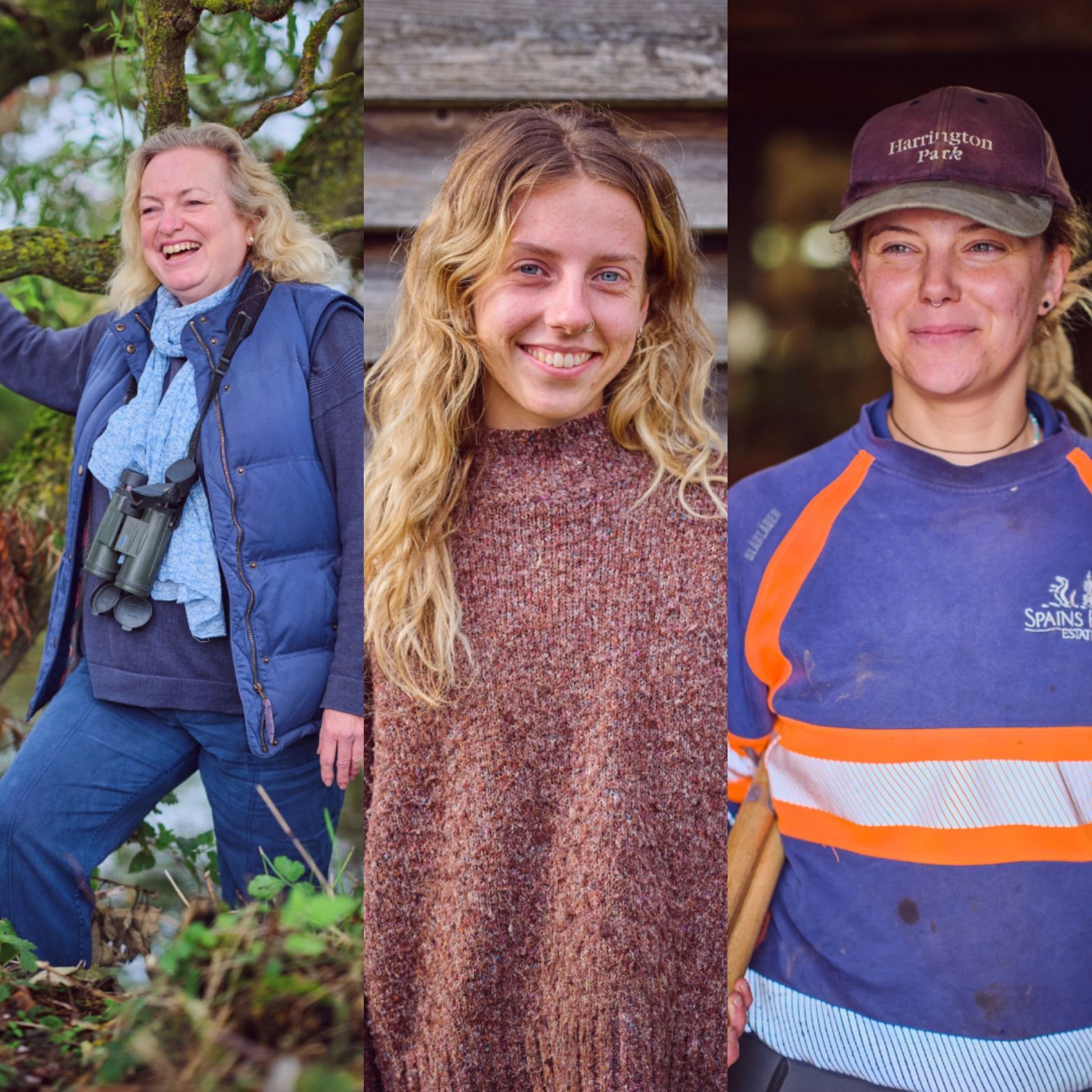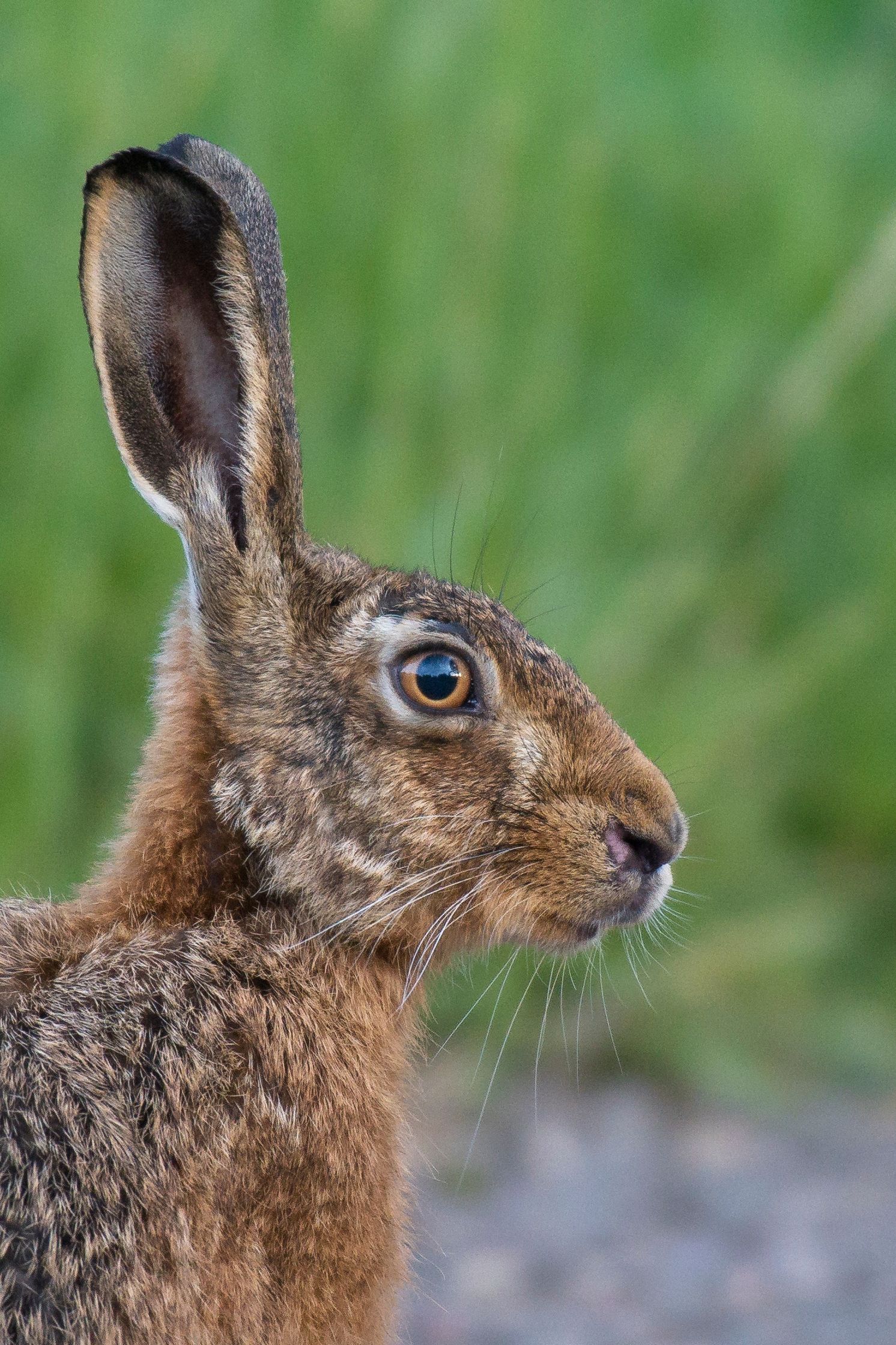Summer did eventually arrive and I managed to do my first survey work in the relative dry of July! It has become a standing joke in the Spains Hall Estate team that if I decide to check my Dormouse footprint tunnels, then the heavens open! However, the arrival of dry weather meant that once again we could get a digger in, ably manned by local contractor Andrew Hull, to dig out a ghost pond; a pond that has been filled in at some point over the decades, but there are clues as to its historic presence on the ground if you look carefully.
I discovered this ghost pond by accident, field-walking during wet winter weather. Whilst ecologists tend to be out and about more in the spring and summer when everything is growing and breeding, there is a lot to be said for a winter walk. You notice different aspects of the land, such as hedgerow and woodland structures, visible without the leaf cover, wintering bird flocks, soil erosion rills and areas that lie wet. The ghost pond was a perfectly round circle of water in an arable field, which in my mind raised a question. Once home, in dry clothes, and with the essentials in life – a pot of tea and chocolate, I looked at the historic maps, and sure enough there was an old pond marked in that exact spot.
A chat with FWAG East’s, Jilly McNaughton, who administers the Essex District Licensing Scheme set the digger wheels in motion to restore the pond. Jilly made a great video of the whole project. In the two ponds we restored last January, we already have a plethora of aquatic invertebrates, dragonflies, amphibians and marginal plants. We also discovered that several species of bats were already using the ponds.
During May and June, Ella Gibbs (pictured) and Pete Claughton of the Essex Bat Group braved dizzy heights climbing up trees to erect bat detectors along the Finchingfield Brook, to provide baseline data for our new beaver enclosures.
We also decided to erect some detectors in the ancient semi-natural woodland. When the woodland located detectors logged out at 19,999 records in a week, it did cross my mind that it might be just one very energetic bat flying back and forth a lot! As it turned out, on the subsequent bat walk, we heard and saw different bat species repeatedly flying across and around the newly restored woodland pond feasting on the many associated invertebrates.


